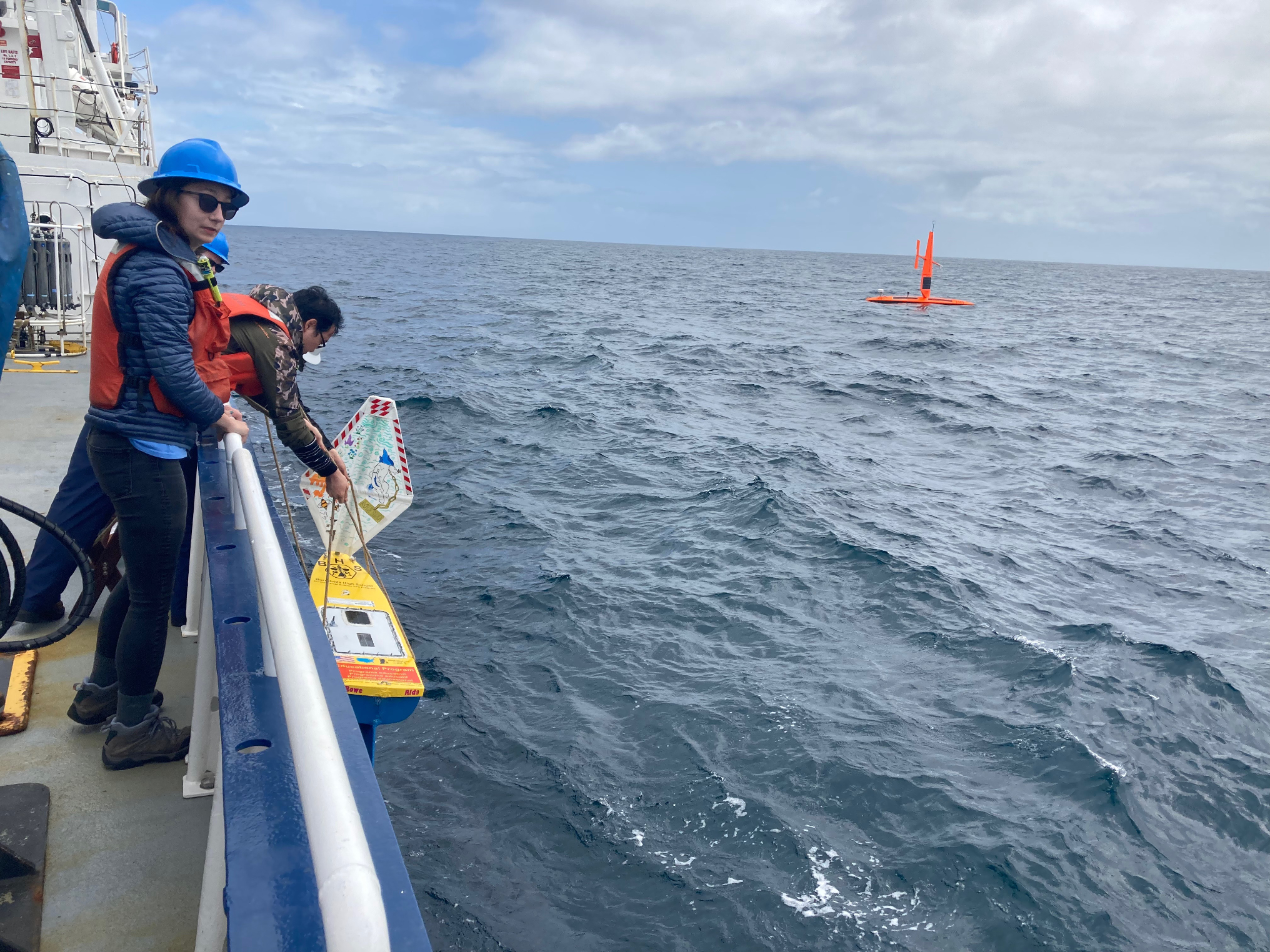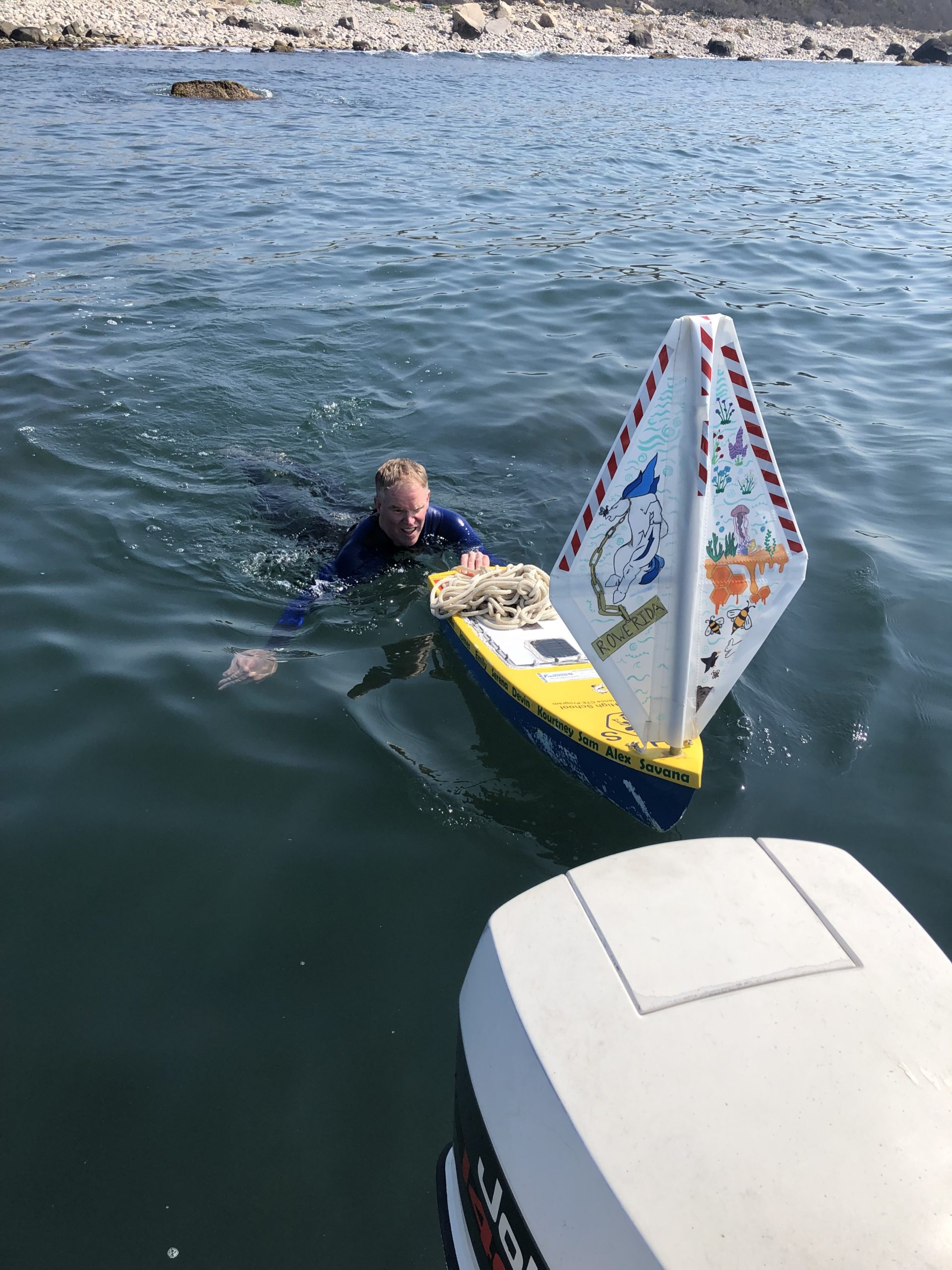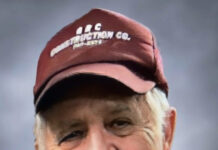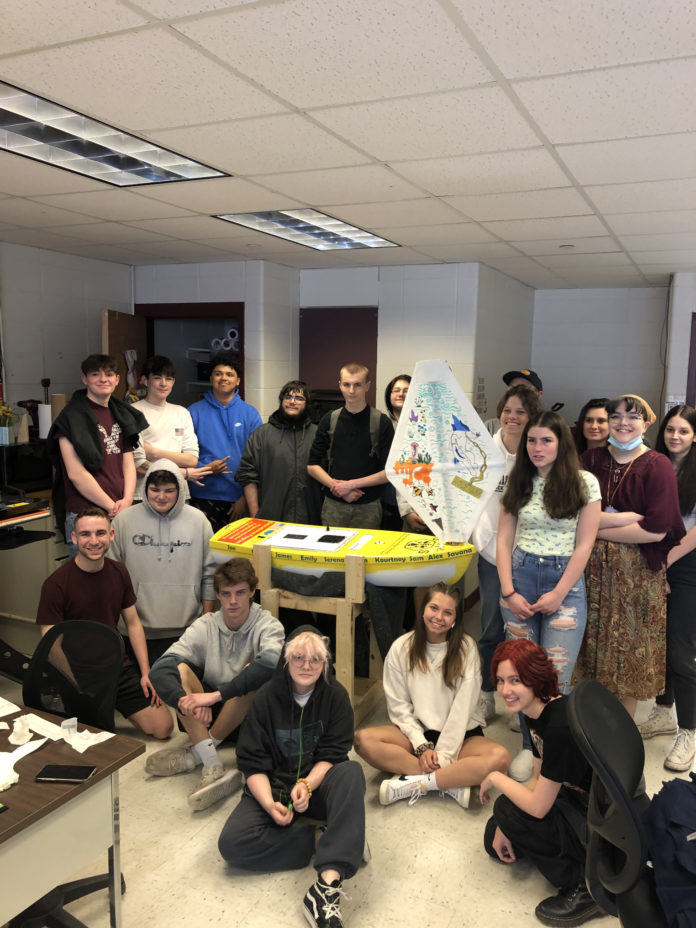BURRILLVILLE – It set sail on Friday, May 13 in the warm ring of the Gulf Stream, on a mission to provide valuable data to those who hope to better understand the waters as they tracked its progress across the Atlantic Ocean.
Students in the Environmental Science Pathway at Burrillville High School designed and built the “Rowe-RIda,” a 5-foot long, solar-powered mini-boat with ocean sensors and GPS, launched by the URI Endeavor. For ten days, the class, led by BHS teacher Gregory Rowe, tracked the boat via a website dedicated to the task, as it collected information used to study the ocean, including how elements such as wind and temperature changed the vessel’s trajectory.

Classes first began working on the boat on Wednesday, April 6, splitting into teams to meet a delivery deadline for the important mission. Students with the Graduate School of Oceanography at the University of Rhode Island had a scheduled launch for the BHS creation, with plans to study data collected thanks to the students’ work.
But first, the vessel would need a name suited to the job. The creative students found inspiration from teacher Rowe, of course, in dubbing it the Rowe-RIda, also including a reference to American rap artist Flo Rida, with the “RI” capitalized to give a nod to their home state.
The teams got to work, with the sail and deck crew tasked with creating an illustration that represented both their pathway and the school. Wildlife and native animals, such as flowers and jellyfish, were included to help represent the environmental aspect, and bees were added to represent a beehive at Burrillville High School. A Bronco was added to the sail, and for a final touch, the students places a gold chain around the neck of the boat to emulate the relation to Flo Rida.
Students on the keel and hull team prepared the ballast by mixing fiberglass resin into dry sand to fill the hollow keel, sanding the connection to the hull after everything was completely dried.
An ocean sensor team was tasked with installing the GPS, solar panels, and electronics, such as the air and water sensors on the mini boat. The students were responsible for laying out sensor design, connecting wires, testing sensor components and final installation.
And a final team focused on media would be responsible for documenting the progress of the boat each day, photographing and discussing the experience.
At 11:35 a.m. on May 13, the BHS Rowe-RIda was launched by the R/V Endeavor crew, on a journey guided by nothing but wind and ocean currents to provide valuable ocean science lessons. Where and when the boat will land is a mystery, all part of an educational experience provided by the unique collaboration.

It is the second year that BHS students take part in the program, managed by Educational Passages. Last year’s “BHS RoweBoat” landed in Nova Scotia on its first voyage, and Newfounded on its second.
As part of this year’s cruise mission, the Rowe-Rida was launched near a saildrone, another unmanned vessel used in data collection. Combined with the student-designed sensor pack, it will report factors such as air temperature, water temperature, and pitch.

Sadly, this year’s journey was cut short. Rowe rescued the boat from the rocks on Pasque Island in Gosnold, Mass. on Sunday, May 22.
“The boat is back at the high school,” said Rowe, noting the team was hoping for a longer voyage.
Rowe said he may attempt to relaunch the vessel in July or he will save the student creation for a visit to URI in October with a teacher cruise.








